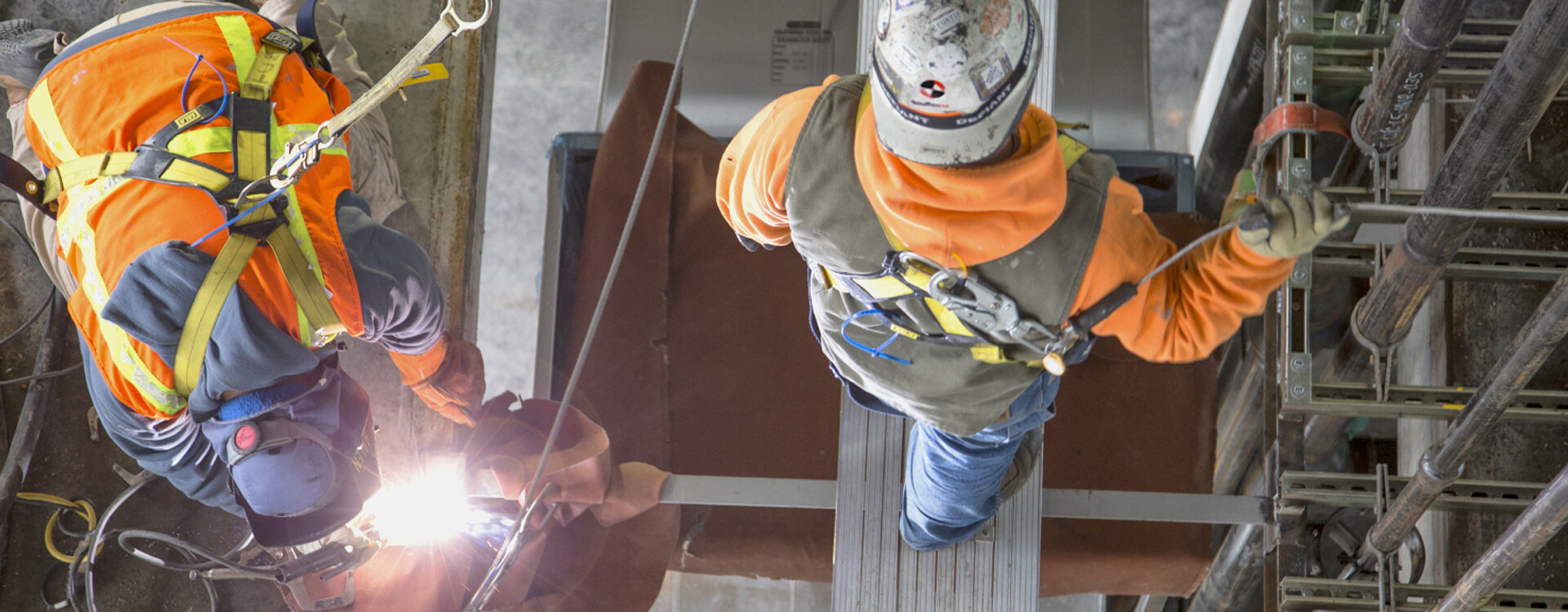
Not even 100 years ago, there was an alarming acceptance that people would almost certainly die on large and risky projects."
It's sometimes hard to believe how much the construction industry has changed over the years, particularly in the area of safety. Not even 100 years ago, there was an alarming acceptance that people would almost certainly die on large and risky projects. The original Bay Bridge and Golden Gate Bridge projects, for example, both completed in 1936, included 39 combined deaths over a four-year period.
What's interesting is when you read the stats, the reporting describes those numbers as acceptable, considering the schedule and the cost to build those structures, but anyone actually working in the construction field (like myself and many others) will see it very differently. Those lives were someone's father, brother, son, uncle or friend, and today they represent all of us (men and women alike) who chose construction as our career path. The risks remain the same, but our attitudes and approaches to our work has not.
Preparing our employees for the future of safety
Recently, I had the opportunity to comment on a study done by Dodge Data & Analytics, published in the Construction Business Owner, which reveals ways for contractors to improve safety on their projects and their companies. Studies and articles like these are important and equally encouraging to see because they emphasize directly and indirectly the importance of one life loss is one life too many.
This all means how we prepare our employees matters now more than ever. Just today I hired a new employee and his first order of business before any work gets installed will be to go through our orientation process with one of our safety professionals. Not only will we ensure he has the proper PPE and training, but observe his attitude towards safety and the work he is about to engage in. We ask ourselves, is he ready or will he be a risk that we need to pay closer attention to? This approach allows our teams to mitigate issues we may normally overlook and recognize only after an injury occurs.
Implementing Lean practices
Lean practices have also played a large role in our ability to mitigate injuries. We must consider not only how work gets installed, but where it gets installed as well. If we allow our most important assets (our employees) to consistently place themselves in risky situations, and wonder why they're getting hurt, we have failed them. Whether we want to admit it or not, how and where work is performed is our responsibility as much as it is theirs.
For example, it's standard practice to wear protective eyewear when drilling overhead. Most companies and employees will comply, no problem. However, what if there is a way we can remove a significant amount of the overhead work all together? We then not only reduce the risk of an eye injury, but also prevent shoulder and wrist fatigue, which may lead to further injury. We do this by changing where the work is performed to a controlled work environment with optimal working conditions that place no extra stress on the worker's body.
Focusing on fall prevention
Falls are another area of concern. Though they still represent a significant portion of the injuries and deaths on construction sites, they also present opportunities for prevention. These opportunities again lie in a company's approach to their work. If we can seek new ways to perform the same work, like considering modular structures, prefabrication and incorporating collaborative partnerships with major trade partners, we give ourselves a chance to make a positive impact.
Like anything important, the journey getting there is not an easy one and it takes many people bound by like minds and common goals to pull it off. This requires even those who may never touch a tool to listen to those who will, and those who will must be willing to engage the engineers, designers and architects about the risk that may possibly be reduced or prevented, even before one piece of steel is driven into the dirt.
How to address safety concerns
When considering our approach to safety, our attitudes, and how we appropriately address those infamous violators, I am reminded of a powerful story. For some reason, a worker performing his duties on the edge of a twelve-story building chose not to connect his safety lanyard. He was immediately brought to the jobsite office to explain why he had put himself in such a perilous situation. The safety director, as she recounted to me, had already planned to terminate him but wanted to understand his mindset first. She asked him bluntly, "What should I tell your family when you're dead after falling from twelve stories?" She paused, waiting for his response. The worker began to weep, realizing he wasn't just risking his own life but also the well-being of his family and the safety of every worker on the project who would have been affected by such a tragedy.
After a thorough discussion, the safety director decided not to terminate the worker, recognizing the deep remorse he felt. She believed he had received the message and learned the lessons necessary to continue his employment. This story has always resonated with me because of her uncommon approach. While many might disagree with it, it was undeniably effective. The worker became a testament to what can happen when we consider safety for ourselves and those around us every day, including our co-workers and family members. I commend the safety director's approach because she not only helped save a life but also profoundly influenced the worker's view of himself, his daily tasks, and how his attitude towards personal safety impacts others and himself.
Safety is always under construction
Although we still have much ground to cover in the area of creating safer construction sites, I am grateful for the advances I see every day. From implementing Lean practices and Prevention through Design into our projects to investing in training and hiring safety professionals to encourage safe best practices, the industry as a whole refuses to accept the idea that one accident is okay.
As we trudge along collectively seeking better ways to keep our employees safe, let's all remain mindful of the hazards they still face each day. It's not just the least we can do to build and maintain better teams, it's also our responsibility and should remain our commitment for the foreseeable future.
Preconstruction Executive
As Preconstruction Executive, Henry Nutt III brings a wealth of experience and knowledge to his position. With over 30 years as a union sheet metal worker, including 13 years with us as a general superintendent, he combines a hands-on, boots-on-the-ground type of approach with a focus on the practical theory of relationship building.



